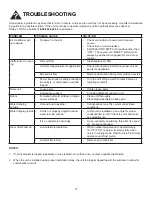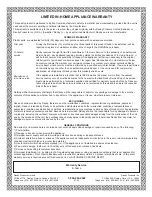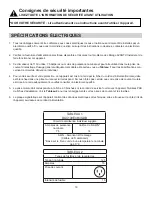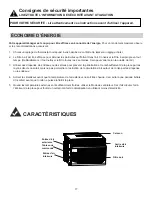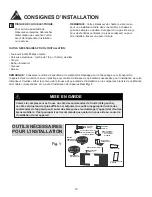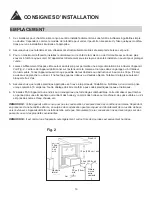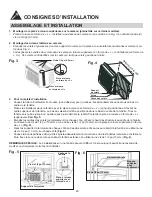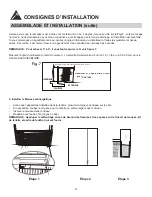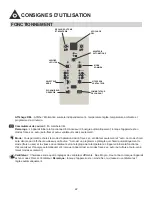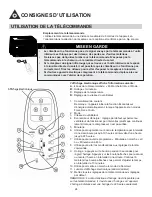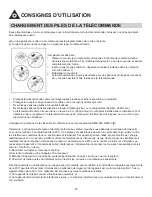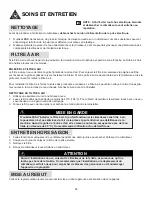
OPERATING INSTRUCTIONS
CHANGING THE BATTERIES ON THE REMOTE
•
Protect the remote control from high temperatures, and keep it away from radiation exposure.
•
Keep the control panel receiver out of direct sunlight.
•
Do not mix old and new batteries.
•
Do not mix alkaline, standard (carbon-zinc), or rechargeable (ni-cad, ni-mh,etc) batteries.
•
The remote operates within a range of 8 meters (26 ft.) from the receiver located inside the main unit. Any obstruction
between the receiver and remote may cause signal interference, limiting the ability to program the main unit.
This Class B digital apparatus complies with the Canadian ICES-003 standard. CAN ICES-3 (B)
NOTE: This equipment has been tested and found to comply with the limits for a Class B digital device, pursuant to Part
15 of the FCC Rules. These limits are designed to provide reasonable protection against harmful interference in a residen-
tial installation. This equipment generates, uses and can radiate radio frequency energy and, if not installed and used in
accordance with the instructions, may cause harmful interference to radio communications. However, there is no
guarantee that interference will not occur in a particular installation. If this equipment does cause harmful interference to
radio or television reception, which can be determined by turning the equipment off and on, the user is encouraged to try
to correct the interference by one or more of the following measures:
1) Reorient or relocate the receiving antenna.
2) Increase the separation between the equipment and receiver.
3) Connect the equipment into an outlet on a circuit different from that to which the receiver is connected.
4) Consult the dealer or an experienced radio/TV technician for help.
Changes or modifi cations not approved by the party responsible for FCC compliance could void the user’s authority to
operate the equipment.
This appliance complies with Part 15 of the FCC Rules. Operation is subject to the following two conditions:
1) This device may not cause harmful interference.
2) This device must accept any interference received, including interference that may cause undesired operation.
Battery replacement:
1. Slide the rear cover on the remote in the direction of the arrow. Continue pulling
(gently) until the cover separates completely from the unit.
2. Insert (2) batteries (AAA) following the same orientation (polarity) depicted inside
the battery chamber (+/-).
3. Re-install rear cover.
4. If the remote control will not be used for extended periods of time (vacations
etc.), batteries should be removed.
To operate the hand-held remote control will require two “AAA” alkaline batteries (included). Batteries should be replaced
when:
a) No signal (beep) is heard when attempting to program the main unit.
b) The main unit does not respond to a command issued by the remote control.
11

















